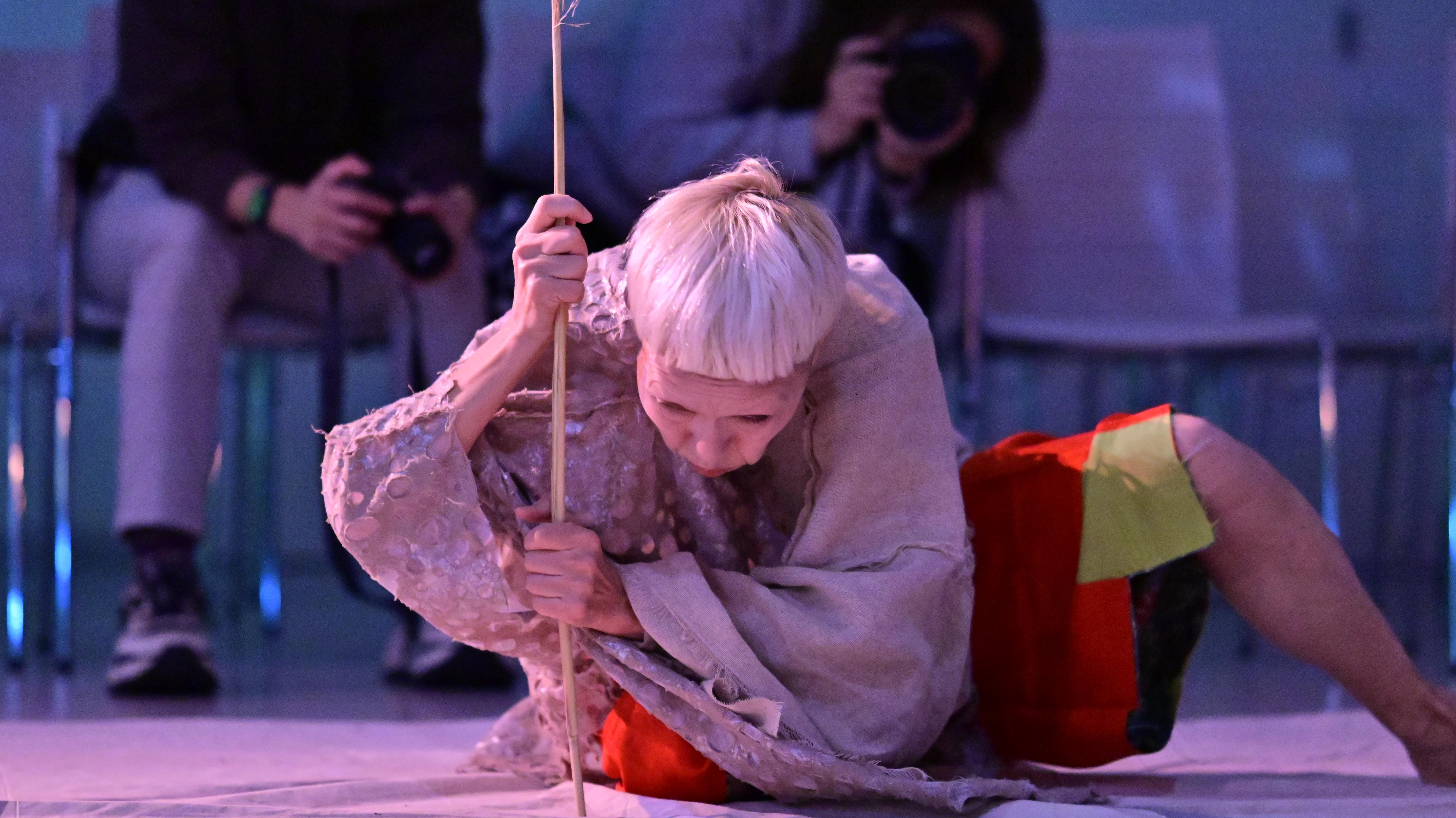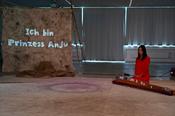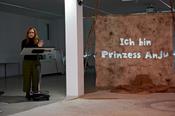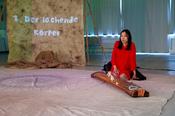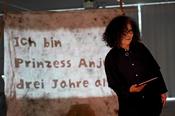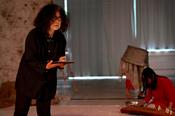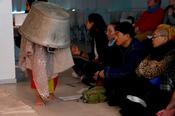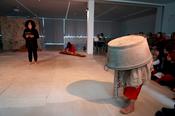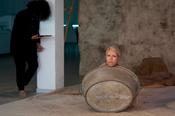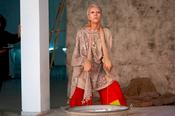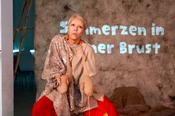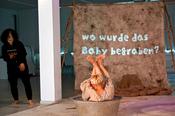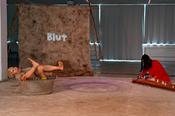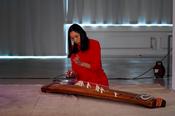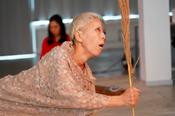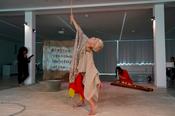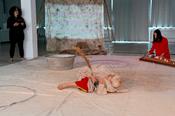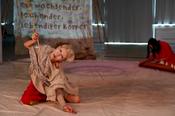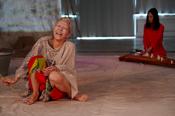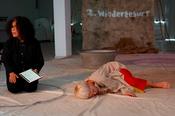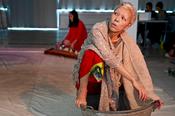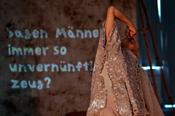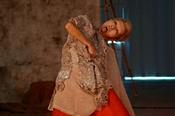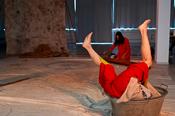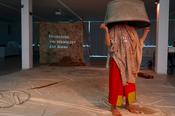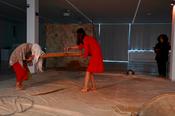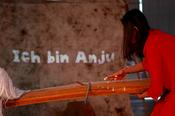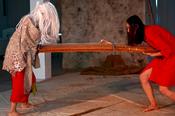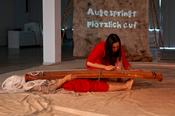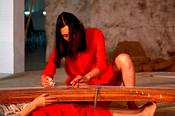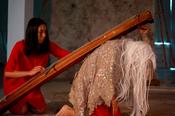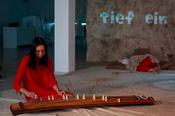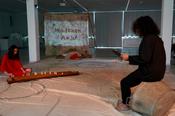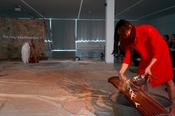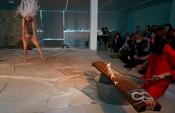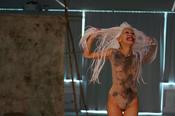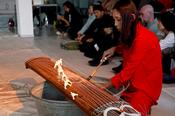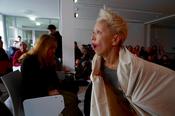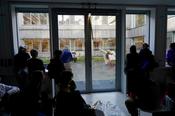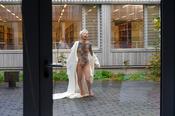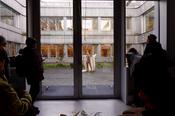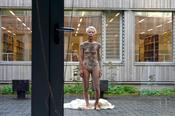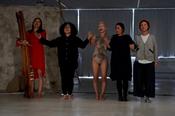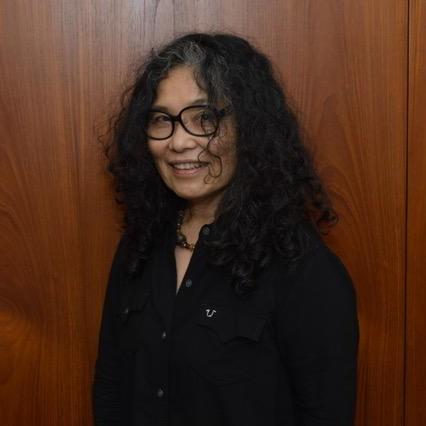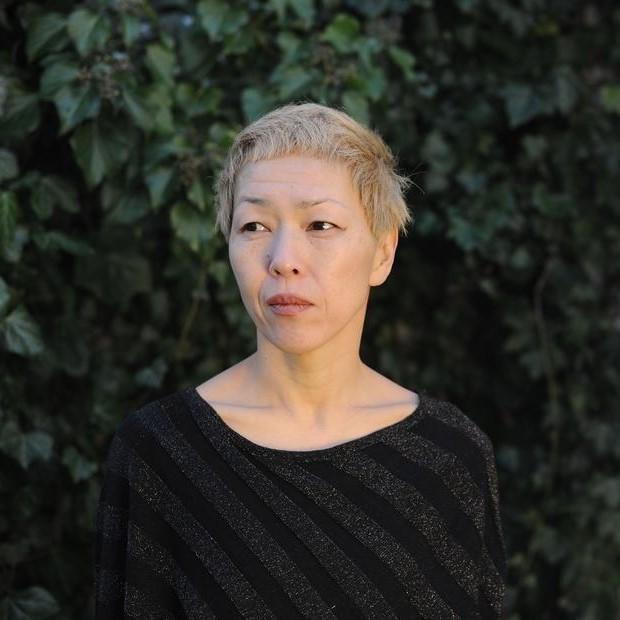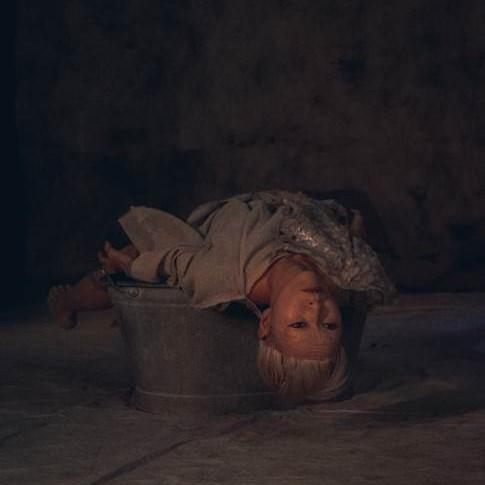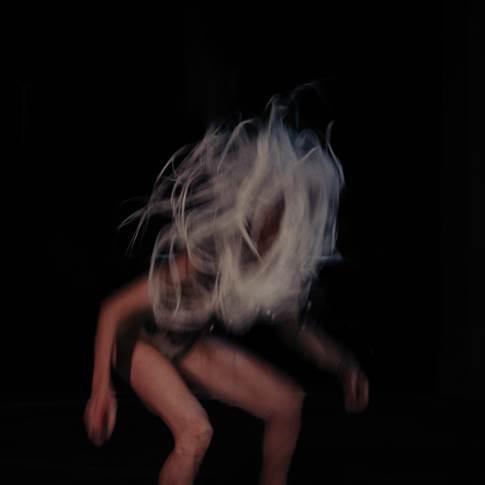"Ich bin Prinzess Anju" – A Transliterary Performance
Japanese poet and writer Hiromi Ito, the 2022 Dorothea Schlegel Artist-in-Residence, wrote a contemporary version of one of the best-known medieval Japanese Buddhist legends, the saga of Sanshō the Bailiff, a tale of filial piety, vice and treachery, self-sacrifice and salvation. Ito’s feminist version focuses on the fate of a girl named Anju, who is cruelly abused by various men but survives and meets other legendary figures from Japanese folktales. The ballad was transformed into a dance performance with Butō artist Yuko Kaseki (Dorothea Schlegel Artist-in-Residence 2023) and koto player Kanoko Nishi in the context of a workshop analysing the various layers of transformation and translation between expressive media, including the role of and interplay with music and video installations. In the interplay of language, sound and movement movement, a radically altered version of Anju was materialised, combining a contemporary re-reading and re-staging with a multifold of references to Japanese literary tradition, performative arts and music.
The performance grew out of the cooperative event “Inspiration Ogai” with Hiromi Itō organized by Irmela Hijiya-Kirschnereit, centering around Ogai’s historical story titled “Sanshō the Bailiff”. That event’s unique approach was to show various transformations of the early 20th century author’s text, who had popularized the medieval saga for a modern audience. Ito’s version displayed a radical transformation of the narrative material, performed by her in the manner of medieval itinerant storytellers together with actress Lena Stolze, who staged the German language version. A recording of their staging can be found here.
From this expressive performance emerged the idea to further transform Itō’s ballad – already the product of multiple re-readings, translations, and genre shifts – into a dance performance with additional expressive layers. Ito’s poetic style, which combines elements of medieval rhythmical sekkyōbushi storytelling with modernist lyricism and contemporary diction, meets with the unique expressive techniques of butō, a Japanese post-world-war II avant-garde form of expressive dance with a vocabulary of “crude physical gestures and uncouth habits” as an “assault on the refinement and understatement so valued in Japanese aesthetics” (Vicki Sanders). This performative tradition presented by Yuko Kaseki, which shows an affinity to extremes of the human condition or extreme physical environments, was deepened through the cooperation with experimental koto player Kanoko Nishi, using her traditional Japanese musical instrument in a variety of expressive ways, including interventive acts and strong percussive moments.
The ballad text, written by Hiromi Itō in 1993, is based on the medieval legend of Sanshō Dayū that can be found in many traditions and contexts since medieval times. Itō based her own re-creation of this text, made widely popular by Mori Ōgai’s 1915 story, on a variant of a shamaness from north-east Japan that was recorded and transcribed by an ethnologist in 1931. In a radical reinterpretation of the legend Itō places the child Anju at the centre and tells the story from her perspective. Sometimes the perspective changes and the mother speaks with Anju’s or the narrator’s voice. The deeply surreal ballad is divided into four parts. 1. The Laughing Body, 2. Rebirth, 3. The Travelling Child and 4. I am Princess Anju. In the last part, other myths and legends are evoked, such as the Japanese myth of the heavenly sibling gods, the mountain witch and the legend of the healing Tennoji. The story spans the origin of history, and culminates in a celebration of healing and new beginnings. The performance emphasizes language in its performative dimensions. It is through language that Anju manifests her existence in the act of narration and in the medium of performative speech.
